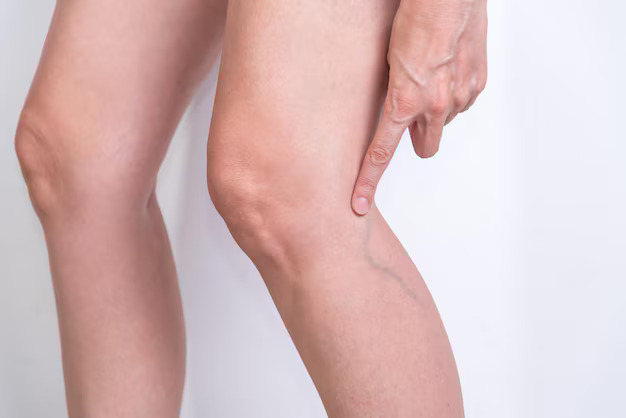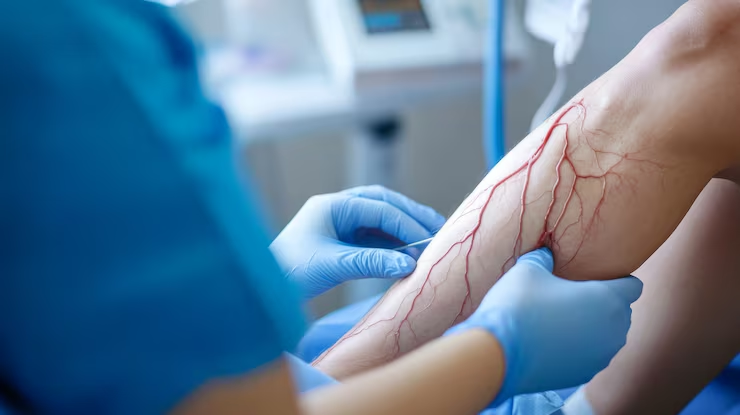Introduction
Patellofemoral Syndrome, often referred to as “runner’s knee,” is a common orthopedic condition that causes pain around the front of the knee. Traditional treatments for this condition have included rest, physical therapy, and pain medication. However, in recent years, there has been a surge in interest and success in minimally invasive procedures like Platelet-Rich Plasma (PRP) therapy, Bone Marrow Aspirate Concentrate (BMAC) therapy, Shockwave therapy, and cortisone shots. These innovative treatments are changing the landscape of Patellofemoral Syndrome management, offering patients effective and less invasive options for pain relief and healing.
What is Patellofemoral Syndrome?
Patellofemoral Syndrome is a condition that affects the patella, also known as the kneecap, and the femur, which is the thigh bone. It is often referred to as “runner’s knee” but can occur in individuals with various activity levels. PFPS is characterized by pain and discomfort around or behind the patella, typically aggravated by activities that involve bending the knee, such as running, climbing stairs, or squatting.
Causes of Patellofemoral Syndrome
1. Overuse or Excessive Strain
One of the primary causes of PFPS is overuse or excessive strain on the knee joint. Activities like running long distances, jumping, or repetitive knee movements can lead to irritation and inflammation in the patella.
2. Muscle Imbalances
Muscle imbalances in the quadriceps and hamstring muscles can also contribute to PFPS. Weakness or tightness in these muscles can affect the alignment of the patella within the femoral groove.
3. Trauma or Injury
A direct injury to the kneecap or a fall can result in Patellofemoral Syndrome. The impact can damage the cartilage beneath the patella or cause misalignment.
Symptoms of PFPS
1. Knee Pain
The most common symptom of PFPS is persistent knee pain, usually around or under the patella. The pain can be sharp or dull and is often exacerbated by activities that involve knee flexion.
2. Crepitus
Many individuals with PFPS experience a grinding or popping sensation when moving their knees, known as crepitus. This is due to the irregular movement of the patella.
3. Swelling
Swelling around the knee joint is another symptom of PFPS, especially after physical activity.
Diagnosing Patellofemoral Syndrome
If you suspect you have PFPS, it is essential to consult a healthcare professional for a proper diagnosis. Typically, a doctor will perform a physical examination, inquire about your medical history, and may recommend imaging tests like X-rays or MRI to rule out other conditions.
Treatment Options for PFPS
1. Rest and Activity Modification
One of the initial steps in managing PFPS is to give your knee time to heal. Reducing or modifying activities that exacerbate the pain can be highly beneficial.
2. Physical Therapy
Physical therapy plays a crucial role in treating PFPS. A therapist can help you strengthen the muscles around the knee, improve flexibility, and correct any muscle imbalances.
3. Orthotics and Bracing
In some cases, orthotic shoe inserts or knee braces can provide additional support and alleviate pain.
4. Medications
Over-the-counter pain relievers and anti-inflammatory medications can help manage pain and inflammation associated with PFPS.
5. Surgical Intervention
In severe cases, when conservative treatments do not yield significant improvement, surgical options such as arthroscopy may be considered to realign the patella or repair damaged cartilage.
Minimally Invasive Procedures
1. Platelet-Rich Plasma (PRP) Therapy
PRP therapy involves drawing a small amount of the patient’s blood, processing it to concentrate the platelets, and injecting it into the affected area of the knee.
How Does PRP Work?
Platelets contain growth factors that stimulate tissue repair and regeneration. When injected into the knee, PRP can accelerate healing and reduce inflammation.
2. Bone Marrow Aspirate Concentrate (BMAC) Therapy
BMAC therapy is a minimally invasive procedure that uses the patient’s own bone marrow to promote healing.
The BMAC Process
A small amount of bone marrow is extracted from the patient’s hip bone and processed to concentrate the regenerative cells. These cells are then injected into the knee.
3. Shockwave Therapy
Shockwave therapy involves using high-energy sound waves to stimulate healing and reduce pain.
How Shockwave Therapy Works
The shockwaves promote blood flow and stimulate the body’s natural healing processes. It can be an effective option for chronic Patellofemoral Syndrome.
4. Cortisone Shots
Cortisone shots, or corticosteroid injections, are a common treatment for reducing inflammation and pain.
Temporary Relief
While cortisone shots can provide quick relief, they are often considered a short-term solution and may not address the underlying cause of Patellofemoral Syndrome.
Benefits of Minimally Invasive Procedures
Faster Recovery
One of the significant advantages of these minimally invasive procedures is the quicker recovery time compared to traditional surgical interventions.
Reduced Risk
Minimally invasive procedures carry a lower risk of complications, infection, and scarring than traditional surgery.
Non-Surgical
Patients can avoid the risks associated with surgery, such as anesthesia and post-operative pain.
Is Minimally Invasive Right for You?
Before opting for any of these procedures, it’s essential to consult with a healthcare professional who can evaluate your specific condition and recommend the most suitable treatment.
Conclusion
Patellofemoral Syndrome can be a challenging condition to deal with, but with the right approach, it can be effectively managed. By understanding its causes, recognizing the symptoms, and exploring various treatment options, individuals suffering from PFPS can find relief and return to their daily activities with less pain and discomfort.
Frequently Asked Questions (FAQs)
1. Is Patellofemoral Syndrome only common among athletes?
No, PFPS can affect individuals with varying activity levels, not just athletes.
2. Can PFPS be prevented?
Taking precautions such as proper warm-up and stretching before physical activities can reduce the risk of PFPS.
3. How long does it take to recover from PFPS with conservative treatments?
Recovery time varies from person to person, but with consistent treatment and rehabilitation, most individuals can experience significant improvement within a few months.
4. Are there any exercises that worsen PFPS symptoms?
Activities that involve deep knee bends or heavy impact, like deep squats or high-impact aerobics, can exacerbate PFPS symptoms.
5. Is surgery the last resort for PFPS?
Surgery is typically considered when conservative treatments have not provided relief, and the pain and dysfunction significantly impact the individual’s quality of life.
6. How long does the relief from these procedures last?
The duration of relief can vary from patient to patient. Some experience long-lasting relief, while others may need periodic treatments.
7. Are there any side effects associated with these treatments?
Side effects are generally mild and temporary. They may include swelling, bruising, or discomfort at the injection site.
8. Can these treatments be combined with other therapies?
In some cases, healthcare providers may recommend combining these treatments with physical therapy for optimal results.








